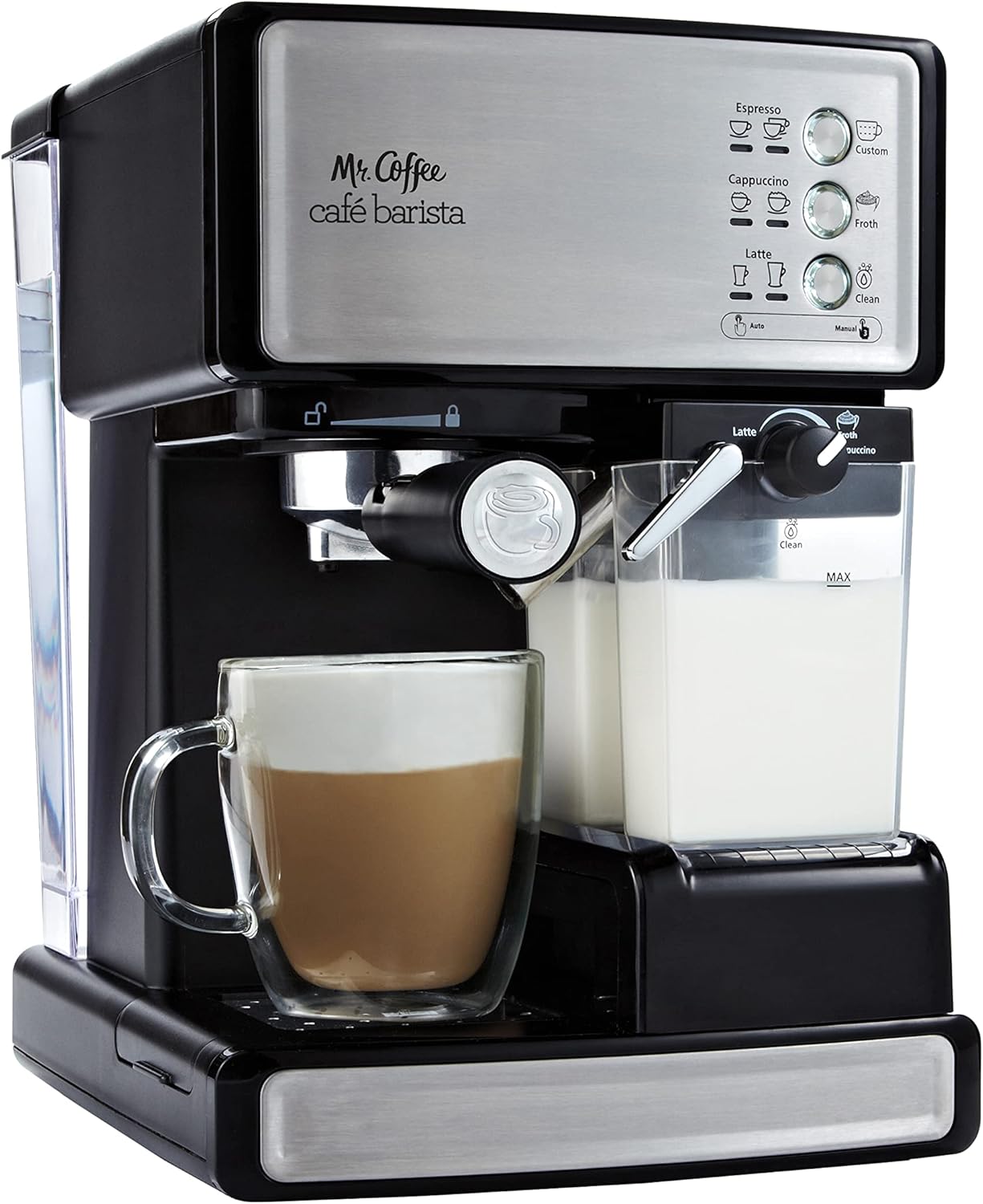Looking to purchase an espresso machine? There are three main types of espresso machines you can buy. Semi-automatic, Automatic, and Super-automatic. For a beginner in the world of specialty coffee, these terms can be confusing to understand. That’s why I’ve created this guide to explain what each of these terms means and highlight key differences between them.
1. Semi-Automatic Espresso Machines

A semi-automatic espresso machine combines the simplicity of an automatic machine with the freshness of a manual machine.
This type of machine gives you more control over the extraction process, as it’s up to you to switch on and off the pump, keeping a close eye on the pressure gauge at all times.
Without a doubt, this is the ideal choice for beginners who want to learn how to make their own cup of espresso without having to do too much work themselves. They’re not as fancy as automatic and super-automatic machines, but they definitely get the job done!
Pros
- Control over the brewing process
- Perfect for those who want to customize their espresso, with options like manual dose control, pre-infusion, and temperature control
- Ability to pull longer shots
- Some machines have multiple boilers and a built-in steam wand, allowing you to make both coffee and milk drinks.
Cons
- Manual preparation requires time and practice
- Requires a certain level of knowledge about brewing
Recommended Top 3 Semi-Automatic Espresso Machines
- Mr. Coffee Espresso and Cappuccino Maker
- Nespresso Essenza Mini Coffee and Espresso Machine by DeLonghi
- DeLonghi EC155 15 Bar Espresso and Cappuccino Machine
2. Automatic Espresso Machines

Automatic espresso machines essentially combine all the benefits of super-automatic and semi-automatic machines. They are incredibly easy to use, like super-automatics, but they also allow the barista to have more control over the tamping pressure and brewing temperature, like semi-automatics.
Automatic machines do almost everything for you, with only minimal input required by you. They grind the beans, tamp them at a precise pressure (usually 30 pounds), brew them at a precise temperature (usually 190°F), and then shut them off automatically when done brewing. You don’t even have to steam your milk! Most automatic espresso machines will steam your milk for you after they brew your shot of espresso.
However, unlike super automatics, automatic machines still give you some control over the quality of your shot of espresso by letting you set how much coffee to use per shot (the dose) as well as how long your shot should last (the extraction time).
Pros
- More control over the process
- Best choice for those who are interested in coffee culture
- Can make any type of coffee drink
Cons
- Not great at multitasking (it can’t make multiple drinks quickly)
- Need some skill and training in order to use it properly
3. Super-Automatic Espresso Machines

Super-automatic espresso machines are the most expensive and the most capable. Most of these machines are at least twice as expensive as other types of espresso makers, but the cost is relative: If you’re a serious coffee geek or a high-flying executive who requires multiple espressos in rapid succession, this may be the kind of machine you want. These appliances can produce multiple cups of coffee in minutes and are often able to adjust the temperature and amount of crema added automatically.
Most super-automatic espresso makers will also carry out all of the necessary steps for making an espresso—grinding beans, measuring quantities, tamping grounds, brewing shots—with only a single button press from your part. Some units will even clean themselves after each use.
Since these machines are able to perform so many tasks with minimal human involvement, it’s no surprise that they tend to require more maintenance than their semi-automatic counterparts. Just about every moving part can fail eventually; if something goes wrong with one component in your super-automatic machine, it could easily lead to problems with others later down the line.
Super-automatics also take up much more space than semi-automatics do; they tend to be huge and bulky compared with other models on the market (making them less convenient for apartment dwellers).
Pros
- Less time consuming
- Less mess
- Better quality control
Cons
- More expensive
- More maintenance required
- Bulky; take more space
Recommended Top 3 Super-Automatic Espresso Machines
- Breville BES990BSS Oracle Touch Fully Automatic Espresso Machine
- Saeco Xelsis Super Automatic Espresso Machine
- Gaggia Brera Super Automatic Espresso Machine
Conclusion
Keeping in mind that there are three main types of espresso machines, each with its own level of automation and user involvement, you can figure out which machine is best for you. If you want to make espresso with a high degree of control, semi-automatic machines are the way to go. They require more skill and precision from you, but if you’re willing to put in the time and effort, the reward will be well worth it.
If instead, you’d rather have less control over the process but still want some input into things like pressure and temperature, then an automatic machine may be a better fit for your needs. With more automation comes less control over what happens during the brewing process.
On the other hand, if all those details just don’t matter to you and all you really care about is having delicious espresso ready for you at a moment’s notice without having to do any work yourself whatsoever, then one of these super-automatics might be just what you need.





